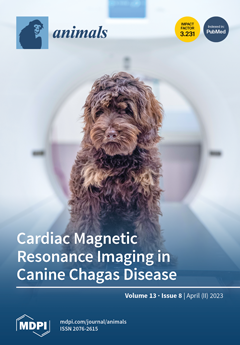The purple tubers of
Dioscorea alata L. have been found to contain a variety of bioactive chemical components, including anthocyanins, which make it significant to investigate the pre-protective effects of
Dioscorea alata L. and its crude extracts on cells prior to oxidative stress.
[...] Read more.
The purple tubers of
Dioscorea alata L. have been found to contain a variety of bioactive chemical components, including anthocyanins, which make it significant to investigate the pre-protective effects of
Dioscorea alata L. and its crude extracts on cells prior to oxidative stress. To establish a suitable oxidative damage model, an injured model of IPEC-J2 cells was created using H
2O
2 as the oxidant. Specifically, when the concentration of H
2O
2 was 120 μmol/L and the injured time was 8 h, the survival rate of cells decreased to approximately 70%, and the cells exhibited a noticeable oxidative stress reaction. Moreover, the crude extracts of
Dioscorea alata L. demonstrated beneficial pre-protective effects on IPEC-J2 cells by increasing the total antioxidant capacity (T-AOC) and catalase (CAT) activities, augmenting the expression of total superoxide dismutase (T-SOD) and its genes, reducing the content of malondialdehyde (MDA) and the activity of glutathione peroxidase (GSH-P
X) and its expression of genes, and promoting the expression of glucose transporter SGLT1 gene while reducing that of GULT2 gene, thereby facilitating the entry of anthocyanins into cells. In addition, the 50 μg/mL crude extracts effectively inhibited the phosphorylation of IκB and the p65 protein, thus reducing cellular oxidative stress. Given these findings,
Dioscorea alata L. can be considered a natural antioxidant for practical breeding and production purposes, with an optimal concentration of crude extracts in this experiment being 50 μg/mL.
Full article






